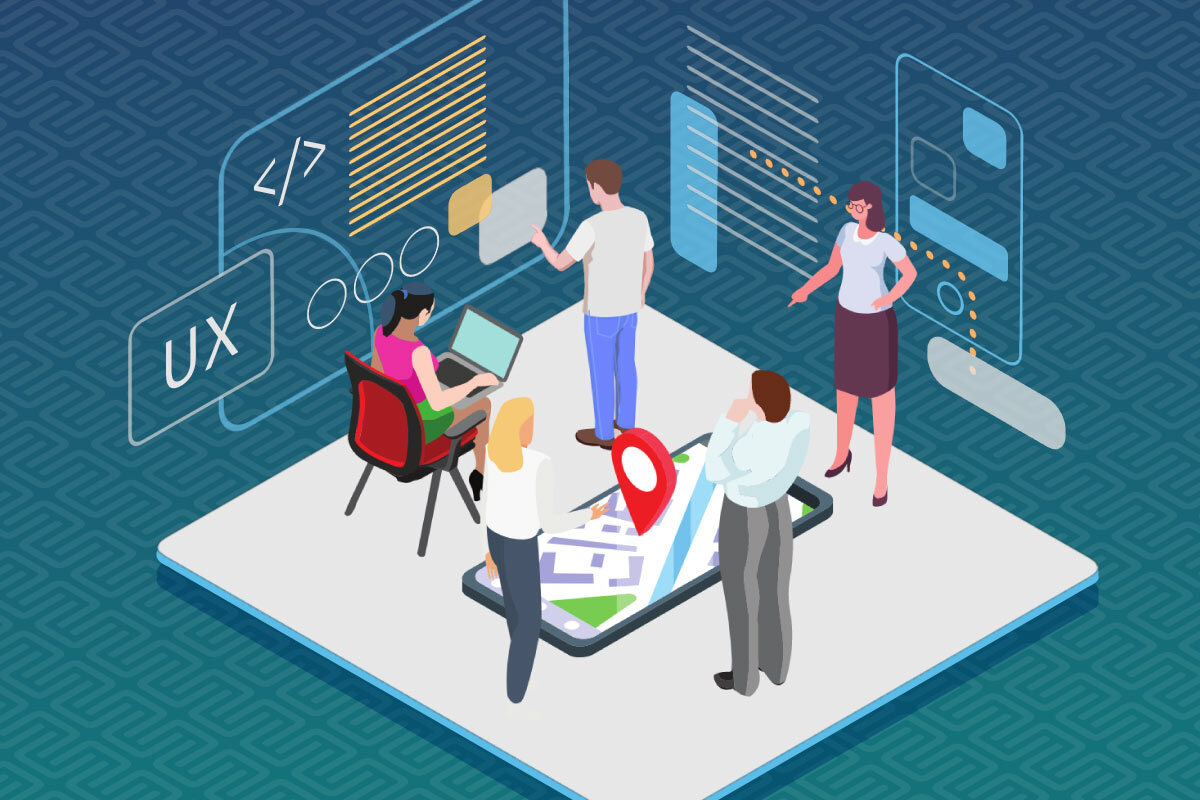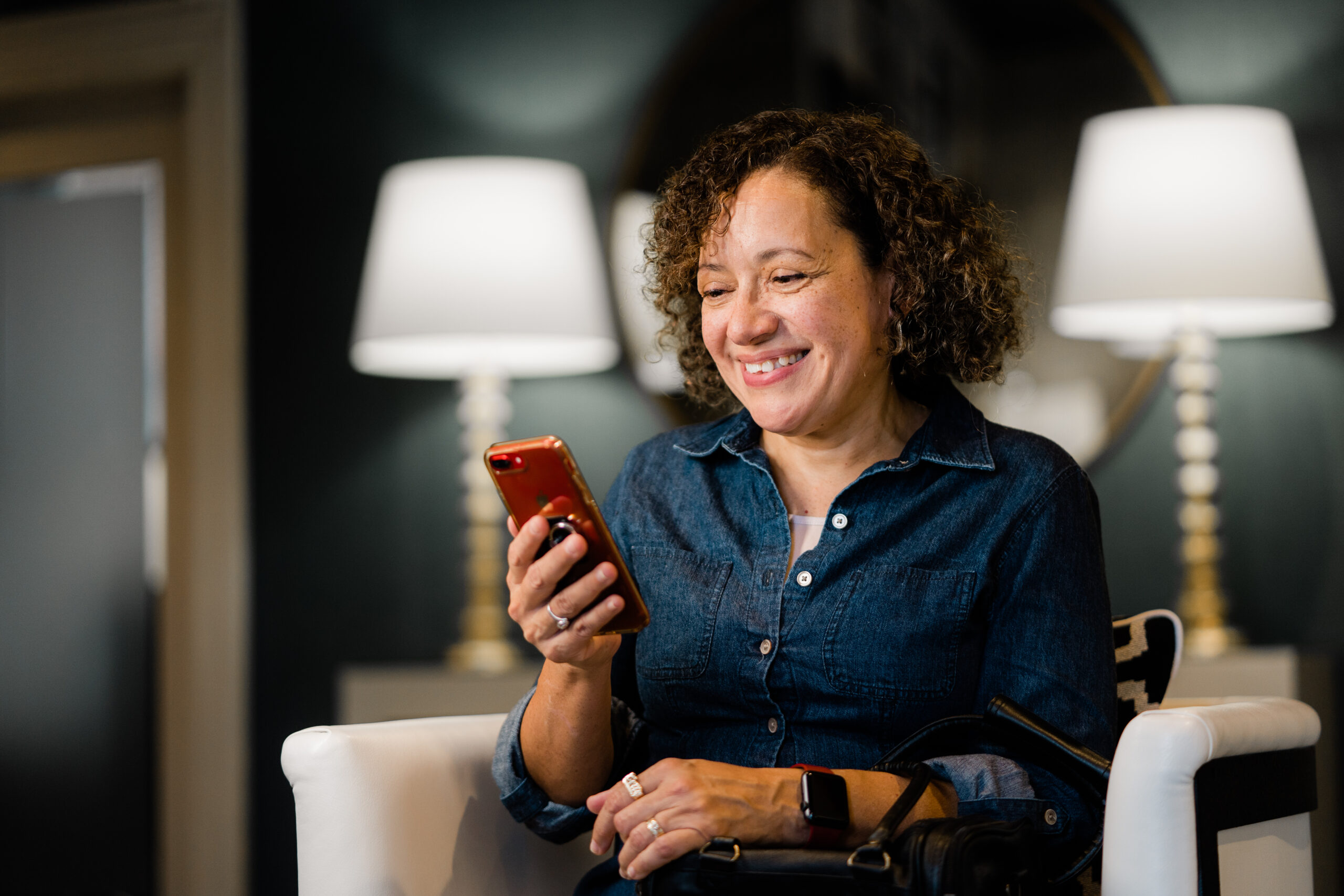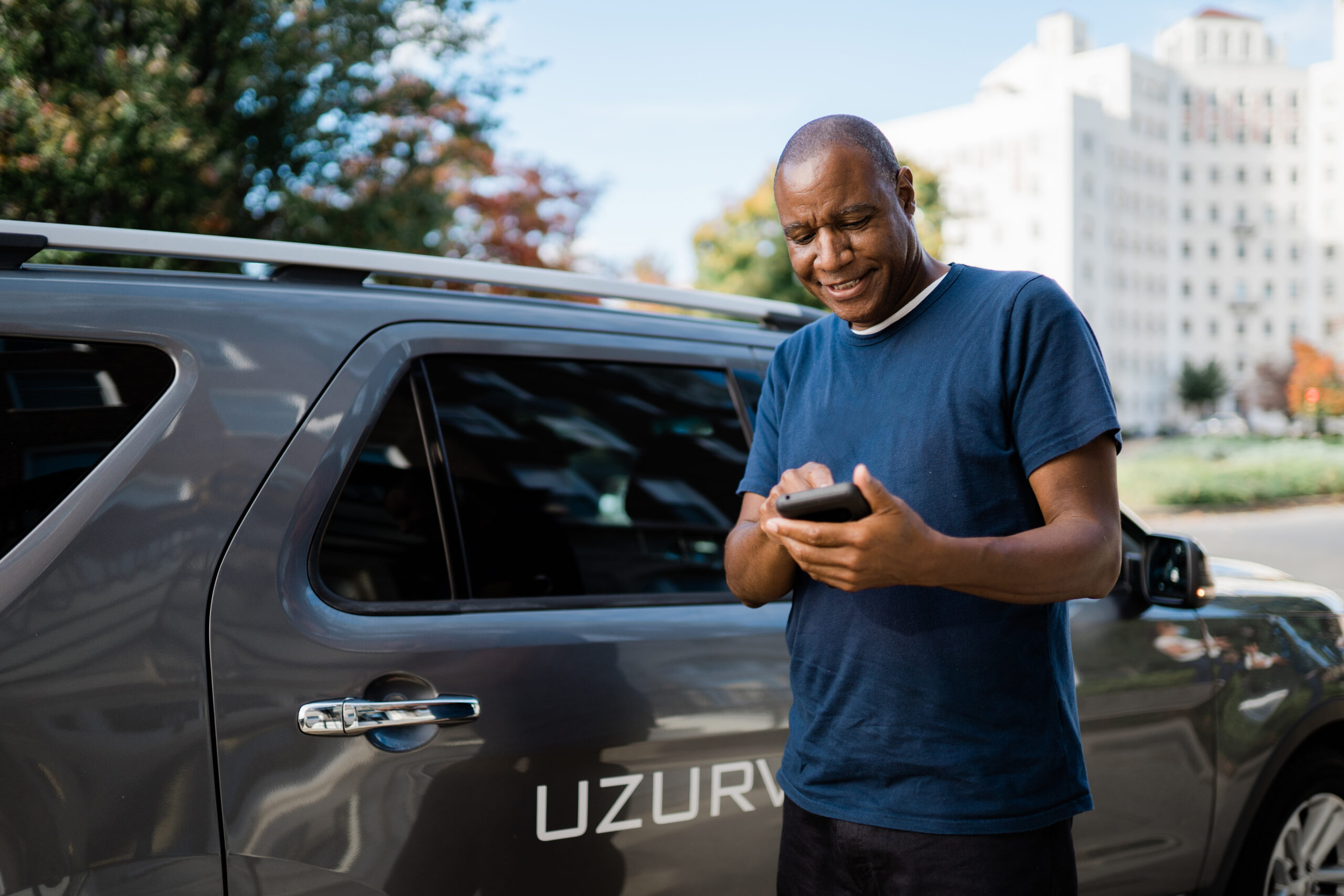
What is the philosophy of UZURV's User Experience Design?
We encounter User Experience (UX) design every day without even noticing. In broad strokes, UX Design is the practice of building an overall experience for a user when interacting or engaging with a given product or service. In app development, a lot of UX is focused on how straightforward and accessible the technology is for users. These can be small yet impactful functions. The ease of swiping left or using voice prompts to open a text, etc.
At UZURV, UX plays a vital role in the efficacy and accessibility of our services. To dig into how that translates to our apps, we spoke to UX Lead Chase Thompson and UX Designer, Christina Huther to explain the basics of their design philosophy and what role accessibility plays in their work.
As a company whose mission is to expand mobility independence for all, including people with disabilities and older adults, our apps must be fully accessible. So, how does this change the way our designers approach UX?
“I would say not much different than any other app,” explains Huther, “You’re going to have members of your audience that have disabilities and so every app you build needs to be accessible, that should be your goal no matter what.”
Chase and Christina are responsible for ensuring that the product and service meet the expectations of our users. That means including users in the design and development process.
Users are the experts
“Being equitable recognizes that somebody might have different needs and making sure that we account for those types of needs and circumstances.”
– Chase
A key step toward an accessible product is to see it used in real life. UZURV invites users to poke and prod our technology as part of the design process
According to Chase, “You can conceptually think about something as accessible, that the contrast is high enough, the phone’s big enough, this should work. But when you see somebody actually interact with it, it changes.”
He says the team finds nuances in user testing that have nothing to do with the app looking good. Actual users interacting with the app show the team how features in the app are being used functionally and often reveal adjustments that make the app more useful for any user.

Research itself has become significantly more accessible both for UX Designers and users with disabilities.
“I rely on the users of the product to give me their feedback and their insight and their experiences and their expectations so that I can empathize with them and build a product that suits them”
– Christina
Thanks to advances in research and feedback methods, Christina tells us, “It’s so much easier for UX designers and researchers to advance accessibility standards.” In the past, receiving feedback required in-person testimonials and testing which could be arduous to arrange and even more difficult for people with disabilities to get to, “because we can hear from people much more easily, especially people who wouldn’t have had the opportunity to participate, just because they’re either hard to find, they can’t access a testing facility, or the technology that they needed to use was not accessible.” Now, with online testing options such as usertesting.com the UX team can quickly find appropriate test participants and gain invaluable feedback.
With that research in hand, the design team then plays a lead role as the voice of the user in the development process.“It’s a large part of what we do,” according to Christina. “We connect our stakeholders with the riders and drivers and connect all of those needs with our development team. Coordinating all of that and making sure the ends are meeting in the right place.”
If not the ADA, then who sets the bar for accessibility?
“One thing that we really rely on is the WCAG…these guidelines help make sure that what you’re doing is, in fact, accessible.”
– Chase T.
The ADA does not include standards or guidelines for web and app development, and so as web development has matured, so have industry standards for accessibility. UZURV designs to the standards set by the Web Content Accessibility Guidelines (WCAG).
The WCAG includes comprehensive guidelines for a wide range of users, and according to Chase,
“You want to think through not just what are best practices. There are a bunch of different people that you need to be inclusive of. Not only physical disabilities, there are people with hearing impairments, visual impairments, and cognitive impairments. There are different aspects to keep in mind when thinking about designing a product to be accessible.”More than industry guidelines, these are standards to be met and then validated by experts. To ensure UZURV products are accessible, our UX team uses third-party auditors. As Chase explains, we do this “…to make sure our products are accessible and to ultimately get a VPAT (Voluntary Product Accessibility Template).” The VPAT communicates to prospective agency clients that we have done our due diligence and that the product meets national accessibility standards.

Assistive technology advancements mean the guidelines are continuously improving.
Rapid technological progress leads to equally rapid improving standards for what is considered accessible.
Chase explains, “These guidelines are constantly updated as technology advances… it allows us from the design and implementation side to think about other ways to make our technology more accessible.”
If the standards are ever advancing how does a UX designer measure success?
The answer is surprisingly simple, “The best UX goes unnoticed,” Christina says, “If nobody has anything to say about it, it’s probably good.”
